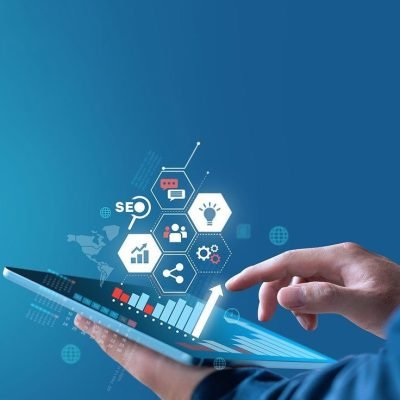The Role of Personalization in Digital Marketing: Creating Unique Customer Journeys

Everyone is looking for unique, trustworthy content, so personalization is no longer a luxury—it’s a necessity. Consumers are confused and sometimes annoyed by countless marketing messages daily, the only way to stand out is by delivering a message that feels tailor made. Enter personalization: the art and science of creating unique customer journeys based on individual behaviors, preferences, and needs.
Why Personalization Matters
A personalized message helps build confidence in the customer to make a purchase and creates the feeling that the product or service is genuinely suited for them. According to studies, 80% of consumers are more likely to make a purchase from a brand that provides personalized experiences. The modern customer expects brands to understand their needs , anticipate their needs, and communicate accordingly.
Key Benefits of Personalization in Digital Marketing
1. Enhanced Customer Experience
journey through the medium most frequently used by the customer. Whether it’s through personalized emails, dynamic website content, or product recommendations, each interaction becomes meaningful.
2. Increased Engagement
People are more likely to interact with content that resonates with them. Personalized campaigns see higher open rates, click-through rates, and overall engagement.
3. Higher Conversion Rates
When customers see products or services that match their interests or previous behavior, they’re more inclined to act. This directly boosts sales and return on investment (ROI).
4. Better Customer Retention
Personalization doesn’t end after a purchase. Post-purchase emails, loyalty programs, and follow-up messages help in building long-term relationships.
How to Personalize the Customer Journey
1. Collect and Analyze Data
Data is the foundation of personalization. Brands should gather insights from website behavior, purchase history, email interactions, social media activity, and more. Tools like Google Analytics, CRM systems, and marketing automation platforms help manage and analyze this data.
2. Segment Your Audience
Group customers based on shared characteristics like demographics, interests, behavior, or purchase stage. This allows marketers to craft targeted messages for each segment rather than a one-size-fits-all approach.
3. Use Dynamic Content
Emails and websites can display different content based on who is viewing them. For instance, a returning customer might see product recommendations based on past purchases, while a new visitor might see a welcome offer.
4. Leverage AI and Automation
Artificial Intelligence (AI) tools can predict user behavior, optimize campaigns in real-time, and deliver hyper-personalized content at scale. Chatbots, recommendation engines, and predictive analytics are prime examples.
5. Personalize Across Channels
Ensure consistency across platforms—website, social media, email, mobile apps, etc. A seamless omnichannel experience enhances the user’s perception of your brand.
Real-World Examples
- Amazon: Recommends products based on your browsing and buying history.
- Spotify: Curates daily playlists based on your listening habits.
- Netflix: Suggests shows and movies tailored to your viewing history.
- Swiggy/Zomato: suggest food options based on different moods, subtly tempting you to place an order.
- These brands have mastered the art of personalization by making customers feel seen and understood.
In a world where consumers have endless options, personalization is your competitive edge. By creating unique customer journeys, brands can foster loyalty, improve customer satisfaction, and significantly boost revenue. The future of digital marketing is personal— so make a plan for it?